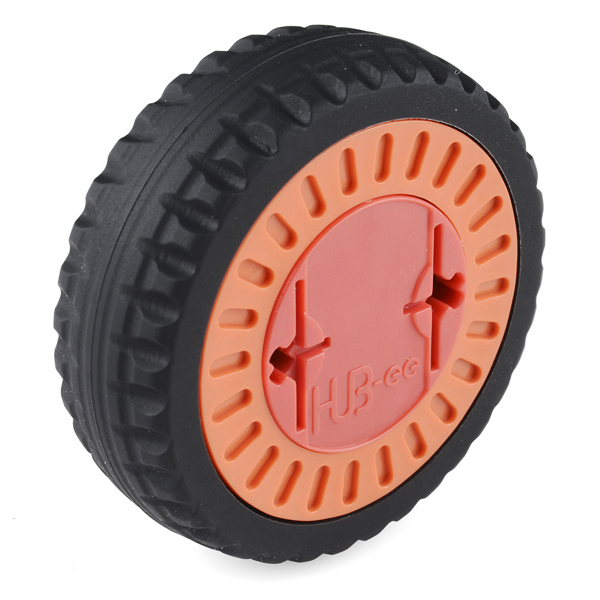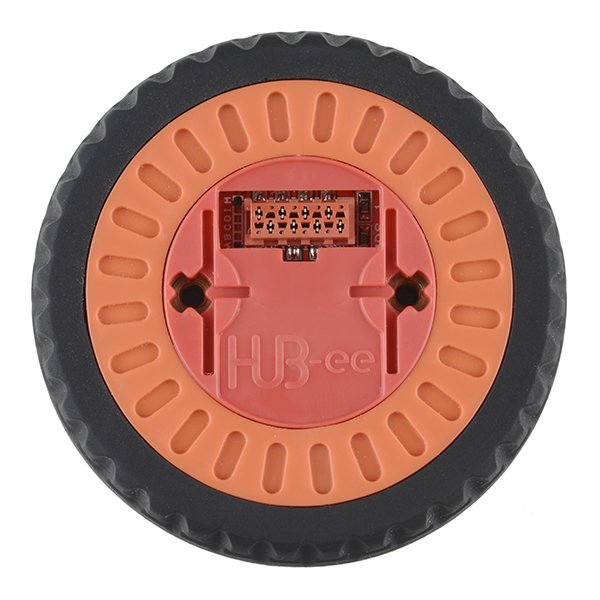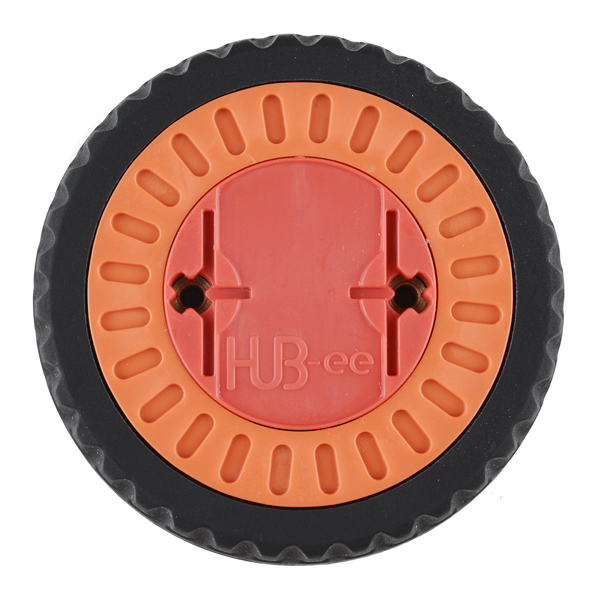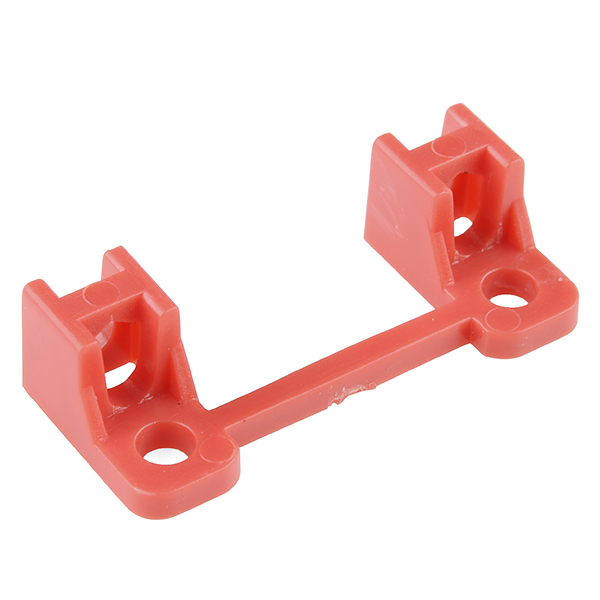HUB-ee Wheel - 180:1 Metric
The HUB-ee is a type of robot servo but designed for wheels, in fact it is a wheel, but it is also a motor, a sensor and a motor controller. What's that? Did we just blow your mind?
When you want to add wheels to your robot you would normally start with a whole collection of parts: The motor and gearbox, a motor driver board, and maybe some sensors for measuring wheel speed and a controller to count revolutions or provide closed loop speed control. Well, the folks over at Creative Robotics thought it would be handy if you could just buy a wheel that had all of those things built in, so they designed HUB-ee - just bolt it onto a chassis, apply power and away you go!
The HUB-ee is easy to mount, too! There are two threaded inserts for M3 bolts built in, there's also a right angle bracket included for situations when you can't go horizontal into the chassis. The mounting holes are even LEGO® lug compatible!! HUB-ee uses Micro-MaTch connectors to keep electrical connections tight and easily changed, check out the related items for mating connectors.
- Removable 12mm Gearmotor
- 180:1 Gear Ratio
- Integrated, Open Source PCB with:
- Motor driver IC
- 32 stripe (128 counts per revolution) quadrature encoder
- Designed for Tires or Tank Tracks (Tires Included)
- Two internal threaded inserts (M3) make it easy to bolt on to a chassis.
- LEGO® Compatible Mounting Sockets
- Operating voltage: 3.5-13.5V
- Logic inputs: 3.3-5V
- Sensor Outputs: 3.3V
- 120RPM @ 7V no load
- 950mA Stall Current
- 100mA No Load
- Datasheet
- [Schematic](http://cdn.sparkfun.com/datasheets/Robotics/BMD-S Schematic V1-4.pdf) (Driver PCB)
- Mechanical Specs
- Arduino Library
- HUB-ee Resource Page
HUB-ee Wheel - 180:1 Metric Product Help and Resources
Core Skill: Robotics
This skill concerns mechanical and robotics knowledge. You may need to know how mechanical parts interact, how motors work, or how to use motor drivers and controllers.
Skill Level: Rookie - You will be required to know some basics about motors, basic motor drivers and how simple robotic motion can be accomplished.
See all skill levels
Core Skill: DIY
Whether it's for assembling a kit, hacking an enclosure, or creating your own parts; the DIY skill is all about knowing how to use tools and the techniques associated with them.
Skill Level: Noob - Basic assembly is required. You may need to provide your own basic tools like a screwdriver, hammer or scissors. Power tools or custom parts are not required. Instructions will be included and easy to follow. Sewing may be required, but only with included patterns.
See all skill levels
Core Skill: Programming
If a board needs code or communicates somehow, you're going to need to know how to program or interface with it. The programming skill is all about communication and code.
Skill Level: Rookie - You will need a better fundamental understand of what code is, and how it works. You will be using beginner-level software and development tools like Arduino. You will be dealing directly with code, but numerous examples and libraries are available. Sensors or shields will communicate with serial or TTL.
See all skill levels
Core Skill: Electrical Prototyping
If it requires power, you need to know how much, what all the pins do, and how to hook it up. You may need to reference datasheets, schematics, and know the ins and outs of electronics.
Skill Level: Noob - You don't need to reference a datasheet, but you will need to know basic power requirements.
See all skill levels
Comments
Looking for answers to technical questions?
We welcome your comments and suggestions below. However, if you are looking for solutions to technical questions please see our Technical Assistance page.
Customer Reviews
No reviews yet.






Cool… but when it costs 85.5 just to get two wheels spinning i'm tempted to just build my own setup for half the cost if i'm building a robot. However, this could be a useful for some of the Lego Teams I mentor.
Where are the tracks? Just use LEGO tracks?
What does it mean by "180:1 Metric"?
Thats the Gear Ratio
Two for one sale!
It's for one or kit of two?
A single wheel